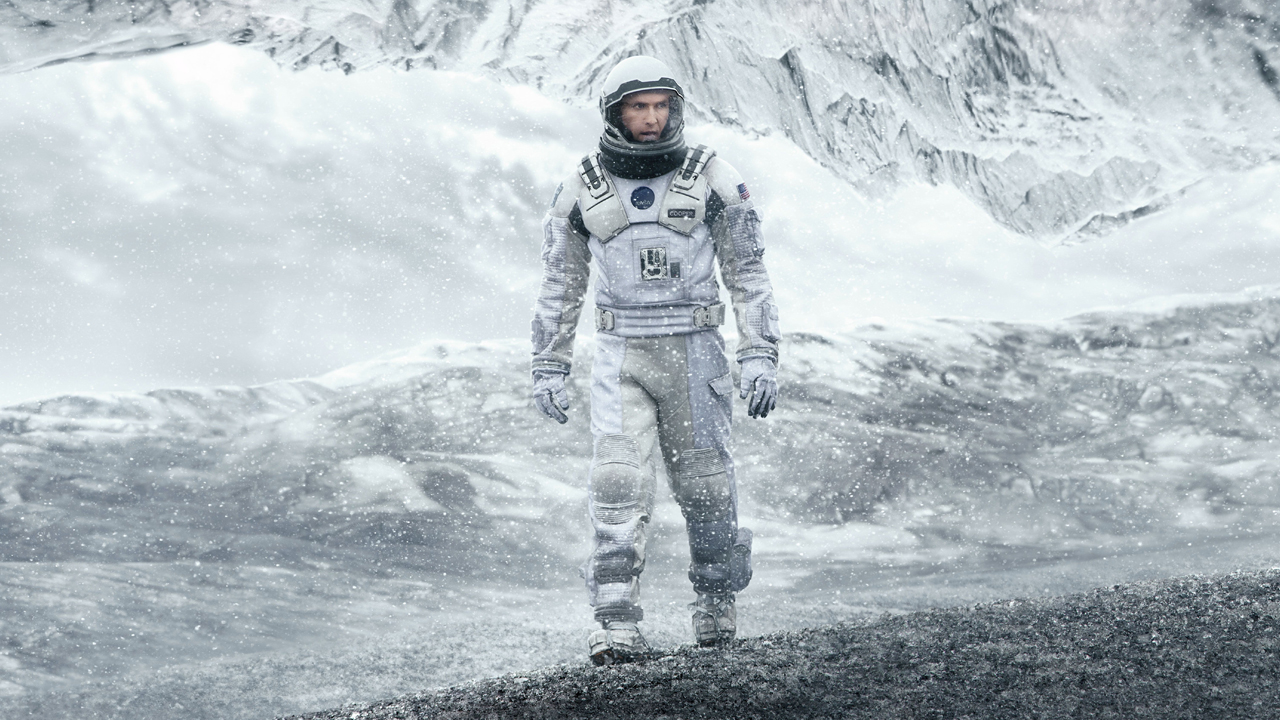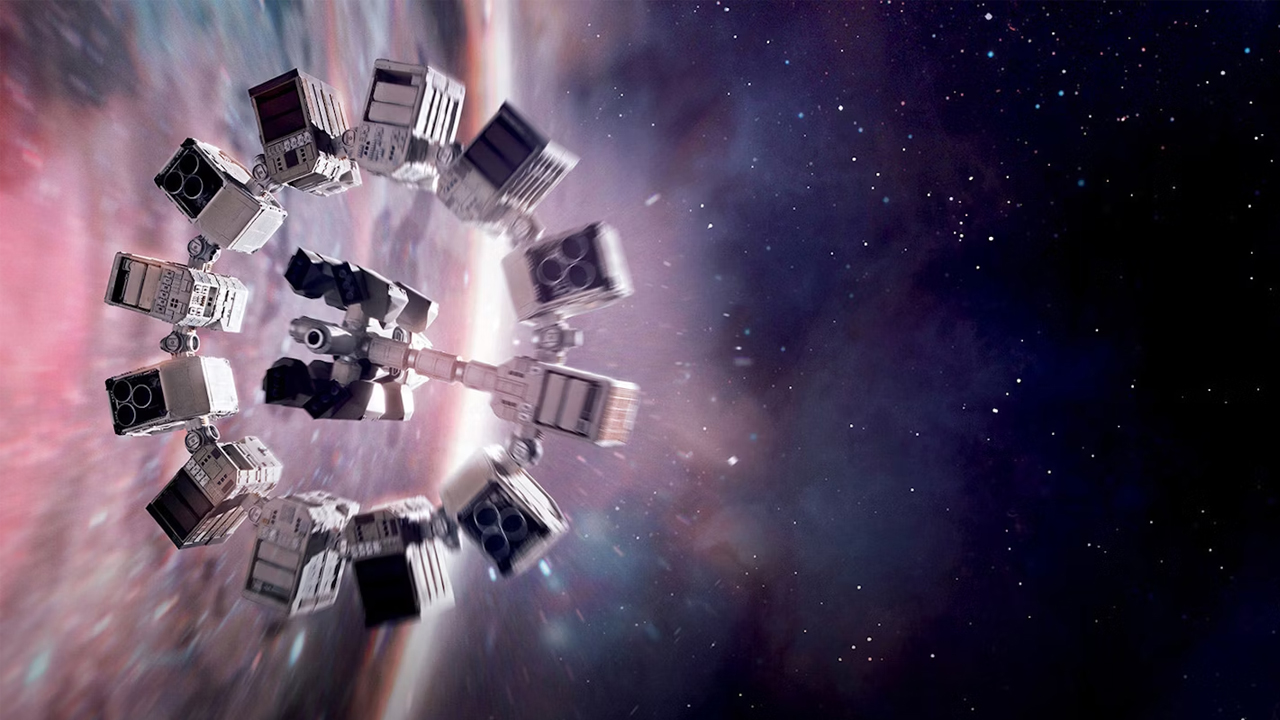Interstellar at 10: Writer Jonathan Nolan and producer Emma Thomas on 10 things that made it a sci-fi spectacular
Space like you'd never seen it before — celebrating ten years of Interstellar with its producer and writer.

Forget 2001 — for modern sci-fi fans, the year 2014 is the one that will forever be seared into their memories. Celebrating 10 years since its premiere today, November 7th, 2014 saw the long-awaited release of Christopher Nolan’s science fiction spectacular Interstellar.
Filtering 60 years of speculative, future-gazing fiction through Nolan’s signature mystery box plot machine, Interstellar was a box office force to be reckoned with. Shrouded in mystery in the run up to its release, it had an all-star cast including Matthew McConaughey, Anne Hathaway and Jessica Chastain, and would go on to make more than $730 million at the box office.
Thrilling and timely — looking at the ever-present dangers of space travel as the ever-growing problems of climate change made off-world living feel like a less-suicidal plan than ever before — it’s arguably Nolan’s most touching and emotionally-charged film, as well as his most visually-stunning.
As Interstellar returns to cinemas for a limited theatrical run, we’re looking back at what made the film so special and so enduringly-exciting to this day, with with exclusive insight from writer Jonathan Nolan, and producer Emma Thomas - taken from interviews that were conducted in 2014, ahead of the film’s original release.
Prepare to boldly go, once again, where some of the greatest minds in cinema had never gone before.
1. The family pedigree
“Our uncle was an engineer and worked on some of the systems used in the Apollo program,” says writer Jonah Nolan, the rocket-dazzled kid who grew up to write this ambitious piece of big screen science fiction.
“He’d send us Super 8 films of the launches. It fed not just my interest in space but my interest in cinema. We’d sit around and watch 8mm films of these massive rockets launching and feel transfixed by the possibilities, and by the achievement."
Get exclusive shortlists, celebrity interviews and the best deals on the products you care about, straight to your inbox.
2. Space-race inspiration
“Look at all of the ideas that go into each and every one of those rockets,” Nolan said, speaking with the lifelong passion that clearly powered the film’s screenplay, and the palpable awe for the tech that NASA engineers built.
“All of the thinking, not just over ten years but millennia, all of the tools, all of the ideas and innovations that mankind has come up with in the last ten thousand years of recorded history, all distilled into one incredibly unlikely machine, powered by a continuous explosion that literally hurtles you into space. It’s a terrible kind of beauty, but a beauty nonetheless.”
3. Spielberg’s loss, Christopher Nolan’s gain
“We were on a scout for Dark Knight when I got a call saying that Spielberg wanted me to do it,” Nolan remembers.
“Steven and [producer] Lynda Obst had partnered with Kip Thorne, who’s a brilliant physicist and one of the fathers of gravitational astronomy. It was a loose mandate – they wanted to do a space adventure film as close to the real physics and a grounded take on it as possible.
“My own feeling about where humanity was at that moment with regard to space exploration was that it wasn’t going to happen!
“If you measure human achievement in altitude – setting aside the space probes we’ve sent out – and ask how far humans have gone, the answer is the Moon. And that’s a hell of an achievement, but that was more than 40 years ago, and we haven’t gone back in close to 40 years. So when Steven was asking for a realistic space exploration film the simplest answer was ‘No film’. Because we’re not exploring space anymore. To people like myself who grew up looking at the space programme and thinking that was a high-water mark for human achievement, it’s been a very depressing age.”

4. Hope in humanity
“When I started writing the film I was in the middle of an era in which there was a very deep cynicism about humanity and where we were headed and what we were doing,” remembered Nolan.
“And I felt like I wanted to watch a film that took a slightly different tack, and said there are certain aspects of humanity that are incredibly noble. We wanted to make something that celebrated some of the more noble aspects.”
5. When two scripts become one
“Chris actually had a separate idea for a script that he’d been working on that also took place in space,” revealed producer Emma Thomas.
“So Chris then took his script and Jonah’s script and melded the two together. Chris has always wanted to make a large scale adventure movie set in space. He’s spoken in the past of the films he’s watched and loved as a kid, from 2001 to Star Wars, and that’s very much the sort of thing that he wanted to address at some point in his career.”
6. The power of secrecy
“Chris and I both feel very strongly that when people go and see the film for the first time we want them to be coming with fresh minds,” said Thomas of Interstellar’s notoriously-secretive pre-release publicity program (or lack of, for that matter).
“We don’t want them to have preconceptions of what the film is and what they’re going to see because inevitably that then affects their viewing of the film. Beyond that we try to work in as quiet and as private a way as we possibly can. And what that does provide for Chris is the ability to stay true to his original concept of what the film is going to be, rather than having a bunch of noise and feedback that he’s listening to from outside. I think the two things feed into each other.”
7. An expert helping hand
“I definitely had trouble wrapping my head around some of these extremely outlandish concepts,” laughed Thomas.
“But Kip, apart from being an incredible mind, is actually a very good explainer of difficult concepts, and he was very patient with all of us lesser beings. I have left the process of making the film with a much greater understanding of astrophysics than I had going in. I now know the difference between a black hole and a wormhole. Before I had no idea.”

8. Space like you’ve never seen it before
“I wanted to see a vision of space that didn’t look like anything I’d seen before,” said Nolan of the visual creative process for the movie.
“If you look at the images the Hubble telescope has captured over the years they give you an insight. As they refine it and upgrade it and make it more powerful and allow it to peer ever deeper into the more distant recesses of our galaxy and our universe, you begin to realise just how dense and rich the universe is.
“You also begin to sense that there may well be some impediments that we haven’t yet fully understood – dark matter, dark energy – that prevent us from really understanding just how dense and rich the universe might be. In visual terms we might begin to realise that we live in a bit of a backwater, that this might be a relatively dark part of the universe, and that our journey would take us to places with visions and sights that we haven’t even dreamt of.”
9. Characters before the cosmos
“It has all of that spectacle and all of that scope but at the same time there’s a very human story going on at the heart of it,” said Thomas, speaking of the superb cast that included Matthew McConaughey, Jessica Chastain, Anne Hathaway and a very young Timothee Chalamet.
“My hope is that people will go and see this film and be wowed by the adventure and the look of it and the worlds that they’re taken to, but at the same time be emotionally engaged by the much more tangible story that they’re watching, that the characters are living through.
“There are some pretty massive concepts that the audience have to deal with in the film, some pretty out there stuff that happens,” added Thomas. “So it was really important that whoever your protagonist is it’s somebody that you’re with, because they have to carry the audience through. Matthew is entirely that guy. You’re with him all the way and he carries everyone through.”
10. The importance of practical props and physical places
“It allows the actors to have something to respond to,” said Nolan on the need for real sets wherever possible over greenscreen trickery.
“We went to visit the set at one point and we’re standing inside one of the spaceships. There were the usual kind of machinations – you roll picture, the lights go down, space appears through the window... and then the whole thing begins shaking. This is the way Chris likes to make movies. It’s as real as possible. The actors aren’t sitting against green cloth having to make it all up. They’re actually getting to react to it, so that sense of awe and wonder is genuine.”
Original reporting for this piece courtesy of Nick Setchfield. This article is excerpted from an issue of SFX, the world's number one sci-fi, fantasy and horror magazine
